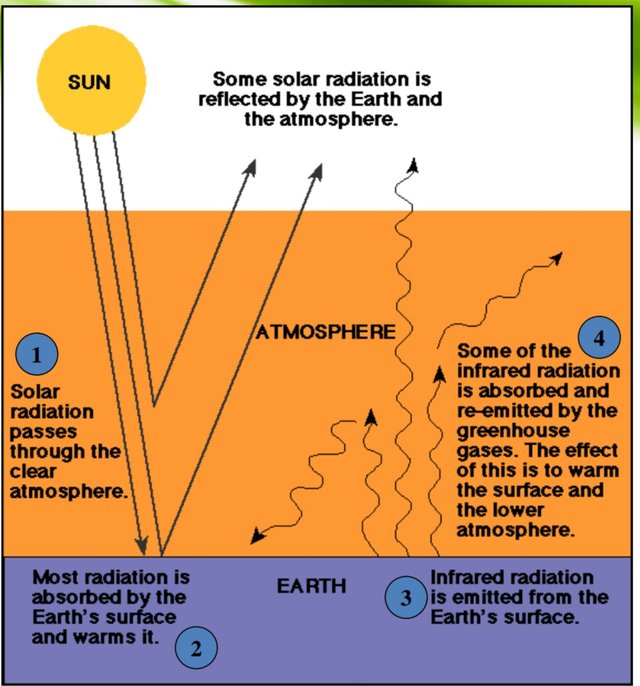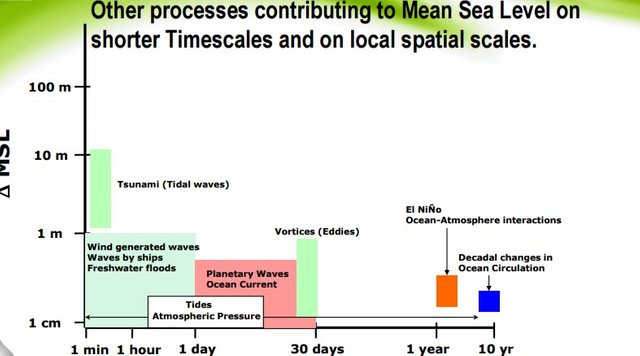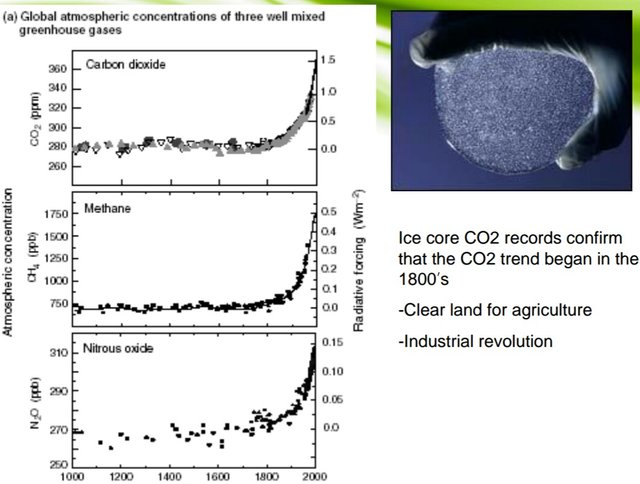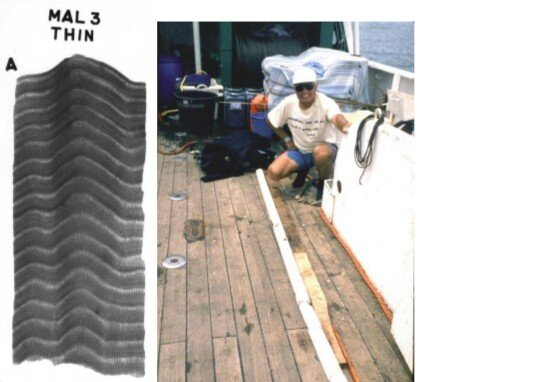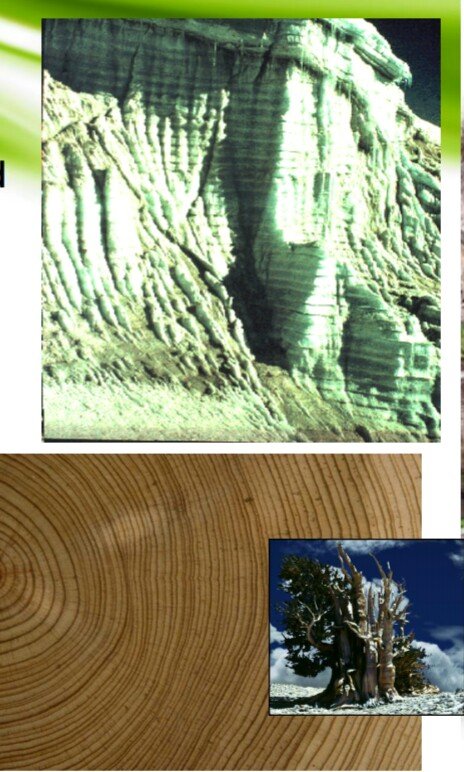# 20th Century Sea-Level Change
• The Earth’s ice is melting, sea level has increased
~3 inches since 1960, ~1 inch since1993.
• Signs of accelerating, melting are now clear
• Land ice particularly striking, poles more
complicated
• IPCC estimates project current trends forward
i.e. LOWER estimate using no acceleration.
Sea level rise:
• IPCC says sealevel rise will be 7” to 22” by 2100,
and much more if rapid ice sheet collapse occurs
• Most scientists would go on record for 1m rise (30inches).
Measuring Sea Level Changes in Time:
(In past times)
18
Differential incorporation of 18 and 16 isotopes of oxygen into the calcium carbonate in the skeleton of marine organisms. Radio-carbon dating of continental margins.
Measuring Sea Level Changes in Time:
(modern times)
• Tide gauges
Located at coastal stations, they measure the relative change in sea level.
• Altimetry
Satelites in orbit can be used to measure the height of the sea level.
• Temperature Of The Ocean
Thermal expansion of ocean changes in height (= Steric Sea Level)
The Earth's climate has warmed about 1°C (1.8°F) during the last 100 years.
(the warming follows the Little Ice Age (19th century) (1-2 mm/yr sea level rise)
Has resulted to:
• Thermal expansion of ocean water.
• Reduction in volume of ice caps,
ice fields, and mountain glaciers.
IMPACTS of HUMAN on SEA LEVEL:
increase in greenhouse-gas emissions:
• Global Warming.
• expansion of oceans many of the world's mountain glaciers will disappear.
• sea level rise acceleration.
Future
• Numerical models of the Climate •System and can be used to predict future changes in Sea Level.
Climate Change.
Climate Change refers to the drastic changes in climate most probably
attributed to green house gas pollution.
Which of the following are scientific statements?
- Reducing CO2 emissions would hurt the economy.
- Improved technology is the best way to slow global warming.
- Warming the earth lets say for example 1°C will be dangerous.
- Global temperatures were 5ºC colder during the Last Glacial Maximum.
- Hurricane Katrina was caused by global warming.
Greenhouse gases in the atmosphere trap heat at the Earth’s surface and prevent it from escaping.
These gases include
:
•Carbon dioxide CO
•Methane CH
•Nitrous oxide NO
•Chlorofluorocarbons
•Water vapor H2O (this is the most important one, by far!)
Without greenhouse gases average temp of Earth
would be
-18ºC instead of 15ºC.
Why do 99.999% of climate scientists believe that CO2 is warming the planet?
- Increased atmospheric CO2 will caused the earth to warm.
- Geologic evidence links CO2 and temperature in the past.
- The warming is unprecedented in the most recent centuries
(dwarfs natural variability). - Climate models show that rising CO2 is necessary to simulate
20th century temperature trends (solar and volcanic minor players).
In other for us to have a proper understanding how climate has changed in the past, we need to use records of ancient climate (Paleoclimate) preserved in ice cores, ancient tree rings, coral bands, and other “paleoclimatic” sources:
key is to CALIBRATE to temperature records.
Consequences of Global Warming (IPCC).
it will reduced the uptake of CO2 by land and ocean in warmer climate.
Rising sea levels (0.3 to 0.6m by 2100)at a minimum.
Ocean pH will decrease by 0.14 to 0.35 (already down 0.1).
Snow cover will decrease, permafrost melt, sea ice melt.
Extreme events (temperature and precipitation) will become more frequent.
Tropical cyclones will become more intense.
Storm tracks will move poleward.
Rainfall will definately decrease in the subtropics and increased at region of the latitude.
Meridional overturning of Atlantic ocean will decrease.
The Uncertain Climate Future
Range of CO2 emissions scenarios:
Strict international agreements has been reach that CO2 emission will be at 600ppm by 2100.
• However, on Mid-grounds, its project at 850ppm by 2100.
• If Business as usual is considered with to steps in place to reduce emissions then it is projected at1550ppm by 2100.
• It should be on records that CO2 is currently 390ppm today.
• In 1800, CO2 emissions was 280ppm in the atmosphere.
Projected patterns of climate change
Warming of 1-6°C by 2100.
Sea levels will rise by 6 to 30 inches by 2100.
Precipitation patterns will change. More erratic precipitation.
Extreme events will increase, hurricanes more intense.
Prospect of abrupt climate change.
Options of measures a country can adopt
to reduce emissions
There are only three (prudent) options:
1)use less energy.
- drive less, drive smaller cars.
- conserve electricity
- recycle, reuse
- make “clean” energy
- solar power, wind power, nuclear energy.
- take CO2 out of the sky (much more difficult).
Reference:
Dr. Abrakasa study notes
University of Porthacourt.

